Web-only Feature
Web-only Feature

Healing from Anxiety, Depression, Trauma Using Forgiveness, Self-Compassion, and Energy Psychology while Tracking Change Over Time
Part 2: Therapeutic Interventions
Internet Editor’s Note: Dr. Friedman recently published an article in the Bulletin on “Excerpt from: Reflections on 50 years of integrative psychotherapy emphasizing practiced-based evidence and effectiveness.” You can find a free copy of the article: here.
“I can choose to forgive rather than judge others and myself.” (Friedman, 2010)
“Love holds no grievances” (ACIM, W. L.68)
This article is Part 2 of “Healing from Anxiety, Depression, Trauma: Using Forgiveness, Self-Compassion, and Energy Psychology while Tracking Change.” The first article demonstrated how I measured and tracked many variables session by session during 15 therapy sessions with Carolyn. It also included some introductory interventions and goal setting. This article focuses more on key interventions such as forgiveness (using affirmations and guided imagery) and energy therapy used in Carolyn’s therapy.
Here is Carolyn’s description in her own words of why she entered therapy.
“Because I was having trouble collecting my thoughts at home. It was causing stress in both my work and home environment. I came in with a lot of fear and uncontrollable thoughts. I thought I was losing self-control and was in a constant state of disequilibrium. I was having trouble with reoccurring panic attacks and I became antisocial in fear I would have another one. I couldn’t do my daily routine. I was having thought after thought and was experiencing . I could not get my own thoughts under control. I wanted to get help because I knew that this was not the norm.”
Carolyn is a 26-year-old married female. A more comprehensive description of Carolyn’s issues was published in Part 1 of this article.
Before describing the interventions, I used I am going to present some graphs of change from the first to 15th session. (Part 1 described mostly detailed session by session changes on other variables.)
Table 1 shows a very significant reduction in depression, anxiety, somatic concerns, trauma and thought confusion using the Clinical PAI Inventory (Morey, 1991). T-scores were used with an average population T-score of 50. A one standard deviation T-score was 60, with increasing multiple of 10 for each standard deviation. Clearly Carolyn was very distressed initially and changed substantially in the positive direction over time.
Table 2 shows marked decreases in anxiety, depression, anger/hostility and vulnerability using T scores on the NEO Personality Inventory-3 (Costa and McCrae, 2010) Again an average T-score is 50.
Table 3 shows marked positive increases in a sense of competence, warmth, self-discipline, and achievement striving using T-scores on the NEO-Personality Inventory-3 (Costa and McCrae, 2010). Again, an average T score is 50. A T-score of 40 is one standard deviation below average and a T-score of 30 is 2 standard deviations below average.
Table 4 shows dramatic decreases in Carolyn’s total interpersonal problems score from the first to the 15th session on the Interpersonal Problem Checklist or IPC (Horowitz et al., 1988). The total average score is around 70. The IPC has 8 subscales and Carolyn was especially high on non-assertive, feeling exploited, overly nurturant and socially avoidant at the first session.
Table 5 shows significant positive changes in openness, emotional stability, and conscientiousness from the 1st to 15th therapy session using the Friedman Mini-5 Factor Personality Scale (Friedman, 2018a). Average scores are 11, 9 ,and 12 on openness, emotional stability and conscientiousness respectively. The maximum score which Carolyn reported at session 15 is a score of .
Interventions
2-Paths Model of Happiness/Change
In session three, with clients in general and in this case with Carolyn, I discuss what I refer to as the 2-Paths Model of Happiness/Change, using thirteen large poster board diagrams.
This 15-20 minute dialogue/lecture is an educational roadmap for change that emphasizes the important role of forgiveness of grievances, judgments, and “shoulds,” and clearing of attack thoughts toward oneself, others and circumstances in the change process. The assumption is that underneath all emotional problems is one core problem, unforgiveness. It also emphasizes that you can always choose between two paths, the path of happiness, love and peace or the path of unhappiness, conflict and fear. The exercises below are designed to facilitate that shift from unhappiness, conflict and fear to happiness, love and peace.
Three Forgiveness Related Interventions
There are over 50 interventions in my Forgiveness Solution book (2010). Many of them have also been discussed in numerous articles (Friedman, 2002, 2006, 2014, 2015a, 2015b; Toussaint and Friedman, 2009) In this article I will focus on three forgiveness:
- Forgiveness Affirmations
- Forgiveness Guided imagery
- Energy Therapy (Positive Pressure Point Techniques)
10 Forgiveness Related Affirmations
(Carolyn was encouraged to practice 1 or more for 30 days or more)
Affirmation 1. Inherent in every difficulty or challenge is the seed of an equal or greater benefit. Look for that seed and nurture it.
Affirmation 2. Inherent in every grievance, judgment and attack thought is the seed of the opportunity for practicing forgiveness. Look for that seed and nurture it.
Affirmation 3. I can elect to change all thoughts, beliefs, attitudes and negative energies that hurt.
Affirmation 4. I can elect to change all thoughts, beliefs, attitudes and negative energies that cause emotional distress.
Affirmation 5. I can escape from the emotional distress I experience by giving up grievances and attack thoughts.
Affirmation 6. I am determined to see and experience things differently.
Affirmation 7. I can learn to see that attack and anger covers up fear, and fear is a call for help and for love.
Affirmation 8. I can choose forgiveness, peace and contentment instead of this: (anger, guilt, fear, sadness, resentment, bitterness, hurt, anxiety, embarrassment, etc.).
Affirmation 9. I can choose to see things from the other person’s perspective.
Affirmation 10. I can choose to forgive rather than judge others and myself.
Many people write these affirmations on note cards they keep with them or on their smart phone. Then they practice repeating them throughout the day. Like Carolyn they find that repeating these affirmations helps to keep them calm and centered.
Forgiveness Guided Imagery
There are 14 forgiveness guided imagery exercises in my book the Forgiveness Solution and Carolyn did all 14 of them during the last half of her therapy sessions. There are also 3 CD’s with all of the imagery exercises, which I gave to Carolyn. They can also be obtained from my Forgivenesssolution.com website. The latter exercises are increasingly spiritual.
Here is the first of the fourteen guided imagery exercises.
Guided Imagery for Forgiving Another
Introduction
Remember that forgiveness is a process that unfolds over time. Practice it on everything and everyone. Life will no doubt present you with many opportunities to practice forgiveness, so be patient yet persistent with yourself. Ultimately, the goal of forgiveness is to release the barriers between you and your true or divine Self, and to dissolve the roadblocks or veil that separates you from others. It will also bring you greater peace, love, joy, happiness, gratitude, wisdom, harmony in your relationships, and blessings in your life. It does require a ‘little willingness” on your part: a willingness to release blaming and projections and a willingness to practice the exercises.
Forgiveness Imagery Process
- Forgiving Another
Part I. Close your eyes. Breathe deeply. Relax. Allow your attention to focus on your breath. Continue to breathe slowly and deeply. Breathing in and out slowly and deeply, slowly and deeply. Concentrate on your breath as it rises and falls, slowly and deeply. Breathing in and out. Focusing on the breath. Now, silently to yourself, repeat the words “calm” on the in-breath and “relax” on the out-breath. “Calm” on the in-breath, “relax” on the out-breath. Breathing in “calm,” breathing out “relax,” slowly and deeply, “calm” and “relax,” slowly and deeply, “calm” and “relax.” Focusing on the breath, slowly and deeply, “calm” and “relax.” Now ask the creative/Infinite Intelligence, the divine, Holy Spirit to help you with the forgiveness process.
Part II. Now think of someone you dislike, actively despise, or hate; someone you are angry at; or just someone you are very ill at ease or uncomfortable with. Say to that person, “I forgive you. I forgive you for anything you may have done consciously or unconsciously, intentionally or unintentionally, that I believe has caused me pain or hurt. I forgive you for any thought, feeling, act, or deed that you have done. I forgive you.” Allow your heart to open to this person you have judged, you have condemned. Open your mind to doubt.
Opening . . . softening . . . softening . . . opening . . . releasing. . .. Letting go. Now, continue to breathe in and out, slowly and deeply. Calm and relax, relax and calm. Opening, opening more. Softening, softening more; releasing, releasing more; letting go, letting go more.
“I forgive you (mention that person’s name). I forgive you for the hurt I perceive, or I think you may have caused me. I am open to doubt.
Perhaps it was just a mistake, an error. I forgive you. I release you. I release me from the pain, the hurt, the fear, the sadness, the incredible anger. I let it go, now. . . opening, softening, softening, opening, releasing, letting go. Breathing slowly and deeply, deeply and slowly, I allow myself to see your innocence. I allow myself to feel your pain, your hurt. I allow myself to touch your heart and be touched by your heart.”
It is so hard to keep oneself out of another’s heart. Feel your heart opening and touching this person’s heart. Opening, softening, touching, releasing, letting go. “I forgive you for anything you did that caused me hurt or pain. I see your innocence. I see your light. I see my innocence. I see your worth. I see my worth. I release you of all judgments I have made against you. I let go of all expectations I had for you. I release all judgments or expectations I have made against myself. I release the hurt, the pain, the anger, the fear, the darkness. I forgive you. I release you. I forgive me. I am at peace. I am at peace.” Opening, softening, releasing, letting go. Breathing slowly and deeply. Calm and relaxed. Calm and relaxed. At peace. At peace.
- Asking for Forgiveness from Another
Part I Repeat part 1 of exercise A above. Once again, ask the creative/Infinite Intelligence, the divine/Holy Spirit or energy to help you. Select a person from whom you want to ask forgiveness.
Part II Say, “I ask your forgiveness for anything I may have done consciously or unconsciously, intentionally or unintentionally, that I believe has caused you hurt, pain, or suffering. I ask your forgiveness. I ask your forgiveness (fill in the personʼs name) for any thought, feeling, word, gesture, or behavior that I did or contemplated doing that I perceive injured you in any way. I ask your forgiveness for any condemnation, judgment, complaint, gossip, expectation, or deed I may have had or done that I think has caused you any distress or guilt or pain. I ask your forgiveness. Opening, letting go, letting go, releasing. I ask your forgiveness! I ask your forgiveness. I ask your forgiveness.”
Breathing slowly and deeply, deeply and slowly. Calm and relax. Relax and calm. Now say, “I release any judgment or condemnation, any anger or attack thoughts I may have thought or said or written toward you. I release them. I let them go, and I ask your forgiveness.” Softening, opening, releasing, letting go. “I allow my mind to open, to trust. I allow my heart to open to your heart. I allow myself to be touched by your heart. I allow myself to feel your compassion, your love.” Opening, softening, releasing, letting go. “I ask your forgiveness. Touching your heart, feeling your compassion, experiencing your love.” Opening, softening. Breathing, slowly and deeply, calm and relax. Calm and relax. Peace and love. Peace and love.
- Self-Forgiveness
Part I Repeat part 1 of exercise A above. Once again, ask the creative/Infinite Intelligence, the divine/Holy Spirit or energy to help you forgive yourself.
Part II Now, repeat to yourself: “I forgive me for anything I think I did consciously or unconsciously, intentionally or unintentionally, that caused me or anyone else hurt or pain.” Say to yourself, “I forgive me (use your own name). I forgive myself for any feeling, attitude, or judgment I may have contemplated, held, or experienced that I perceive caused me or anyone else anger, guilt, sadness, or pain. I forgive me.” Opening, softening, softening, opening. “I forgive me (use your name) for any condemnation, criticism, or attack thoughts that I used against myself or another to diminish, demoralize, or depress myself or another. I forgive me. I forgive me. I forgive me.” Releasing, letting go, letting go, releasing. “I forgive me for any self-hatred, anger, or guilt that I used to devalue myself or undermine my self-worth or my self-respect. I forgive me. I forgive me for any thought, act, behavior, or deed that I believe hurt or injured or caused distress to anyone else or to myself. I forgive me.”
Softening opening, opening, softening. Releasing all doubt, all judgment, all “shoulds” all negativity, all expectations. Letting go of all the pain, all the sorrow, all the hurt, all the fear, all the anger. “I forgive me and I accept me.” Allow yourself to perceive your innocence. Allowyourself to see your essential worth. Allow yourself to experience your inner light and love. Say, “I forgive me” to you. Allow your heart to open to you.
Opening, softening, softening, opening. Allow yourself to feel compassion for you. Touch your hurt with your incredible compassion. Touch your heart with your kindness and understanding. Opening, softening. Forgive yourself. Touch yourself. Love yourself. Allow yourself to be loved. Allow yourself to love yourself.
Feel the incredible love you have for yourself. Feel your innocence. Feel your worth. See your incredible light and inner beauty. Feel your love for you. Relax and calm. Love and peace. Allow yourself to love yourself. Deeply, unconditionally love yourself. Ask the creative/Infinite Intelligence, the divine/Holy Spirit or energy to help you to love yourself. Deeply. Profoundly. Unconditionally. Allow yourself to love yourself. Deeply, unconditionally love yourself. Say to yourself, “I love you. You are loved. I love you. You are loved. I love you.” Be at peace.
Take five slow, deep breaths, open your eyes, and in your journal write about your experiences.
Energy Therapy and the Positive Pressure Point Techniques (PPPT)
These techniques are often referred to simply as the “Tapping Techniques” although my version involves more than just tapping. Carolyn stated at the end of therapy that “The Tapping Technique was probably the most helpful thing I learned. I use this on a daily basis.”
The Positive Pressure Point Technique is an energy therapy technique adapted from the emotional freedom technique or EFT, thought field therapy or TFT, touch and breathe or TAB, the Tapas acupressure technique or TAT (Bernstein, 2018; Callahan, 2002; Church, 2018; Diepold et al., 2004; Feinstein, 2018; Fleming, 1997; Freedom, 2013; Ortner, 2014). It uses both a tapping protocol and a hold and breathe protocol using eight meridian pressure points, with and without affirmations. It also includes a forgiveness protocol and is used following the Psychological Uplifter, Anything is Possible and Releasing/Choosing exercises (see below).
Most clients find it quite powerful in facilitating change. In session four, Carolyn was taught both the “tapping” and the “hold and breathe” techniques without any affirmations (the Positive Pressure Point Technique – Level 1 and 2). The descriptions below are from my book, the Forgiveness Solution (2010) adapted slightly for this article.
At the beginning of each of the Positive Pressure Point Techniques clients are taught:
- a) The Psychological Uplifter
The following is repeated three times while rubbing on the sore point, i.e., the neurolymphatic point: (See Figure 1)
“Even though I have some of this problem or negative emotion (fill in the emotion/problem e.g. fear, anxiety, hurt, anger, depression, sadness, guilt, shame, low self-esteem, work, marital, relationship and family problems _______________etc.) I accept myself deeply and profoundly and I am a good, competent and magnificent person”.
Followed by: “I love myself unconditionally despite my problems and limitations” three times while rubbing on the sore point.
Followed by: “I am entitled to miracles” 3 times while rubbing on the sore point. This is done 10-20 times per day or as often as the person can.
I demonstrate the Psychological Uplifter on myself while clients follow me, doing it on themselves. I ask clients which words apply to them and I circle the key words such as “hurt, anger, anxiety, depression, guilt, work and relationship problems” on the handout sheet I give them. This technique might also work well if they rub on or just hold their heart area instead of their “sore point”.
- b) Anything is Possible Technique
Then I teach them the “Anything is Possible” technique and tell them to do it every day after the “Psychological Uplifter.”
Here are the instructions.
“While tapping with five fingers of one hand on the fleshy part of the side of the other hand (often called the “karate chop point,” shown in Figure 1) repeat three times: “Anything is possible; I am entitled to miracles; miracles are happening; and “miracles come from love”.
- c) Releasing/Choosing Technique
After the “Anything is Possible Technique“ I teach clients the “Releasing/Choosing” technique. The instructions are:
“While tapping with five fingers of one hand on the karate chop point (see Figure 1), repeat 2 times:
“I release the hurt, anger, depression, guilt (or whatever they are struggling with) and all of the roots and causes (known and unknown) and all of the effects on me and everyone else in my life”.
Then repeat two times: “Instead I choose to feel calm, relaxed, peaceful and happy and forgiving”.
I first demonstrate these exercises and we then do it together. Then clients and I practice all three energy stress release techniques learned so far, one after the other. Clients are strongly instructed to practice all three exercises in sequence 5 or more times per day. If they follow the instructions, and most do, the scores on the weekly questionnaires will be showing substantial changes at this point.
Positive Pressure Point Technique, Level 1
Use of Pressure Points and Tapping with No Affirmations (PPPT-L1)
“First, reflect briefly on the one area of emotional distress, such as anger, hurt, guilt, sadness, or fear, that you feel when you think of the person, circumstance, or yourself that you are having a challenging time forgiving. (In Carolyn’s case it was initially her father and later her mother) Rate it on a 10-point scale with 10 being very distressed (i.e., experiencing a lot of anger, hurt, guilt, sadness, or fear) and 1 not being distressed at all. This is called a SUDS (subjective units of distress) level or scale. Attune to the emotional distress. Briefly think about the emotional distress, anger, hurt, guilt, sadness, disappointment, fear, etc. Do not dwell on it, however. Just think about it briefly. Do the “Psychological Uplifter, Anything is Possible and Releasing/Choosing” steps.
Then using two fingers of either hand, tap gently and consistently fifteen to twenty times on each of the following eight pressure points: See Figure 1.
- Center of the forehead (Figure 2). Use two fingers of one hand.
- Inside corner of the eyebrows, just below the eyebrow (figure 3). Using two fingers of both hands is preferable.
- Just outside the side of the eye (figure 4). Using two fingers of both hands is preferable.
- Under the eye on the bony part of the eye in the center (Figure 5). Using two fingers of both hands is preferable.
After tapping on the first four points, stop briefly and give yourself another SUDs rating from 1 to 10. In most cases, the numbers will have dropped as many as two to six points, and very occasionally all the way to 1.
- Above the lip (Figure 6). Using two fingers of one hand is preferable.
- Below the lip and above the chin (Figure 7). Using two fingers of one hand is preferable on this pressure point.
- Behind the neck (Figures 8a and 8b). When tapping behind the neck, use all the fingers of both hands. Tap up, down, and all around forty-five to fifty times on the back of the neck points, as this area is especially beneficial. Make sure when tapping on the back of the neck to go down the center, up, and around while covering all the muscles, arteries, and veins in the back of the neck.
- The collarbone-chest area (Figure 9). Using two or more fingers of both hands is preferable on these pressure points.
After tapping on all eight pressure points, give yourself another SUDs rating. In many cases, the SUDs rating will have dropped to 1. If the SUDs rating has not dropped to 1, repeat Level 1.
Before doing the Positive Pressure Point Technique Levels 2 to 5 first do the Psychological Uplifter, the Anything is Possible and the Releasing/Choosing Techniques.
Positive Pressure Point Technique Level 2
Pressure Points with Holding and Breathing with No Affirmations (PPPT-L2)
Follow the instructions for the first seven steps of Positive Pressure Point Technique Level 1.
Using two fingers of either hand, hold each pressure point (Figures 2-9) while breathing in slowly through the nose and breathing out slowly through the mouth three times for each of these points, as detailed above.
In particular, I had Carolyn work on lowering her anger and hurt at her father and her SUDS levels dropped from 9 to 1.
Carolyn was much more peaceful after these exercises. In the fifth therapy session Carolyn also learned the Positive Pressure Point Technique Level 3 and 4 and we reviewed the exercises she had done at home in the Forgiveness Solution book (chapters 3, 4 and 5).
Positive Pressure Point Technique Level 3
Pressure Points with Tapping, Holding, and Breathing with No Affirmations (PPPT-L3)
Level 3 of the Positive Pressure Point Technique is identical to Levels 1 and 2 except that you alternate a round of tapping on the eight pressure points with a round of holding and breathing.
Start with the first seven steps of PPPT-L1. Using two fingers of either hand, tap gently and consistently fifteen to twenty times on each of the eight pressure points. Then, again using two fingers of either hand, hold each pressure point while breathing in slowly through the nose and breathing out slowly through the mouth two times for each of the eight pressure points. After tapping, holding, and breathing on the first four pressure points, stop briefly and give yourself another SUDs rating. In most cases, the numbers will have dropped from two to six points, and occasionally all the way to 1. If the SUDs rating has not dropped to 1, repeat Level 3 of the Positive Pressure Point Technique.
I encourage clients, as I did Carolyn, to practice Levels 1, 2 and 3 of the Positive Pressure Point Technique ten to twenty times a day, or as often as they can, and experiment with using it on all kinds of distress.
Positive Pressure Point Technique Level 4
Pressure Points with Tapping, Holding, and Breathing with Affirmations (PPPT-L4)
Level 4 is identical to Level 3 except that you alternate a round of tapping on the eight pressure points with a round of holding and breathing and also add certain affirmations.
Start by doing the previously described steps of the Positive Pressure Point Technique Level 1. Then using two fingers of either hand, tap gently and consistently fifteen to twenty times on each the eight pressure points (see below).
In Level 4 of the Positive Pressure Point Technique, when tapping on each pressure point, use the following generic affirmation formula two to three times (usually three at first): “I release X, I want Y. I release X, I choose Y. I release X, I am Y.”
For example, say, “I release anger, I want to be at peace,” “I release anger, I choose to be at peace,” and “I release anger, I am at peace”
This set of affirmations focuses on what you want to release, what you want to experience— empowerment (I choose) and acknowledgment/remembrance of one’s true nature (peace). In general, it reinforces what you have been learning in other ways; that is, releasing darkness and choosing/acknowledging light. Sometimes it is also beneficial to add “I release X, I intend Y”; ”I release X, I focus on Y” and “I release X, I am Y” after you say, “I release X, I choose Y,” where X is the anger, guilt, hurt, or other distressing emotion, and Y is “be at peace.”
Tap using the sequence detailed above.
After you have done the tapping with the affirmations on each pressure point, I encourage clients to practice the holding and breathing process two times on each pressure point, with the idea that they are breathing in peace on the in-breath and breathing out whatever distress they are attuned to on the out-breath. For example, clients can imagine that they are breathing in peace and breathing out anger, guilt, sadness, fear or hurt.
Sometimes clients may find it beneficial to use more than one word while doing the tapping. For example, they may want to say: “releasing anger, hurt, and disappointment,” instead of releasing only anger. They may want to say “I want” or “I choose to be calm, relaxed, and at peace” rather than “I want” or “I choose to be at peace.”
The main point is that you are reducing or releasing the negative distress and increasing or strengthening the positive feelings and attitudes. Everyone is unique, and there is no right or wrong way to do it.
Clients may find that they prefer either the tapping method or the hold and breathe method, and they may find after practicing them both that they prefer doing the Positive Pressure Point Technique process with or without affirmations. I do, however, encourage clients to try the different versions on all kinds of issues, both small and large, and to practice it frequently. Practicing even a few times a day, however, can give great relief for many people as it did for Carolyn. It is often very beneficial to write the affirmations or the whole process on note cards, the computer, their smart phone or in a journal.
I helped Carolyn, using Positive Pressure Point Technique (PPPT) Levels 3 and 4, to reduce her marked anxiety, anger and sadness. The use of the PPPT Levels 3 and 4 reduced the SUDS levels from 8 to 1. She reported that she felt more competent, worthy, peaceful, and successful. At this point I had her visualize positive changes occurring in all areas of her life (financial organization, job, marriage, relationships, etc.) in 3 months, 6 months, and 1 year. This also led to her feeling much better.
In the 6th therapy session I reviewed Carolyn’s homework from chapters 6, 7 and 8 in the Forgiveness Solution book.. One part of this homework included 30 forgiveness affirmations such as: “Forgiveness is the key to happiness and peace,” “I am determined to see and experience things differently,” and “I can forgive rather than judge others and myself.”
Positive Pressure Point Technique Level 5
Positive Pressure Point Technique Level 5 with Forgiveness Affirmations
In Level 5, we add forgiveness affirmations. After doing all the steps of Level 3, clients then tap continuously about a hand’s width beneath their armpit, first under the right arm (Figure 10)) and then under the left. Finally, they tap on the center of the chest (no figure). The forgiveness affirmations are used to further emphasize that forgiveness is a key to happiness, to strengthen their connection with the path of light, and to further connect them with their true identity.
Forgiveness Affirmations Used with Positive Pressure Point Techniques Level 5
This group is used while tapping under the right arm:
I forgive myself for my contribution to this problem. I forgive myself, I am doing the best that I can. I forgive myself, I release all judgments against myself. I forgive myself, I release all grievances against myself. I forgive myself, I release all attack thoughts against myself. Forgiveness is the key to happiness.
Then, while tapping under the left arm, repeat these phrases.
I forgive him/her (use the person’s name). for his/her (pick one) contribution to the problem. I forgive him/her (use the person’s name) He/she is doing the best that he/she can. I forgive him/her. I release all judgments against him/her. I forgive him/her. I release all criticisms against him/her.
I forgive him/her. I release all attack thoughts against him/her. Forgiveness is the key to happiness.
Now, while tapping in the center of the chest, repeat these phrases: Forgiveness is the key to happiness. There is forgiveness in my heart for myself and for him/her. (Say twice, usually using the person’s name) There is love in my heart for myself and for him/her (use their name). (Say twice) Deep down, I am the Presence of Love. (Say twice)
I thank God or the Universe (choose one) that I am at peace, and all my problems have been solved. I thank God or the Universe (choose one) that i am healed and at peace. I thank God or the Universe (choose one) that I am at peace and healed. I thank God or the Universe (choose one) that I am out of the darkness and experiencing light.
Next, put your hand on your heart and close your eyes. Then say silently and slowly to yourself: I am grateful for all the experiences in my life in the last month, the last three months, the last six months, and the last year. (Say three times and reflect on those experiences.) I am at peace. (Say two times slowly) I am calm, relaxed, and at peace. (Say two times slowly)
Take three more slow, deep breaths. Gradually, very gradually open your eyes and bring your consciousness back into the room. Give yourself a SUDs number. If it isn’t down to 1, repeat the PPPT- Level 5 from the beginning.
PPPT technique Level 5 usually occurs around session 5 or 6. By this time it has become pretty clear whether a client is spiritually inclined or not. The integrative forgiveness solution and energy healing approach combined with cognitive and behavioral techniques I call the ICBEST approach (integrative cognitive, behavioral, energy and spiritual therapy). This approach has a strong psycho-spiritual component. With clients who resonate with it, I can and do enhance the spiritual aspect of the treatment from this point on with dialogue, imagery, affirmations and other healing techniques.
Conclusions
- In Part 2 of this article I first presented and empirically tracked dramatic changes from the initial therapy session to session 15 on a number of variables: depression, anxiety, anger, trauma, vulnerability, somatic concerns, thought confusion and competence, warmth, openness, emotional stability, self-discipline and interpersonal problems for a very distressed client, Carolyn.
- I then described a number of powerful integrative interventions that catalyzed the change in Carolyn: forgiveness interventions (forgiveness affirmations and guided forgiveness imagery) and energy therapy. I focused particularly on an energy therapy I call the Positive Pressure Point Techniques or PPPT. PPPT consists of tapping on or breathing while holding acupressure points, plus the use of affirmations and forgiveness phrases. The forgiveness affirmations, forgiveness imagery and the Positive Pressure Point Techniques were used in addition to useful and effective interventions described in Part 1 of this article: goal setting, the miracle goal question, visualization, relationship enhancement, assessment feedback, and bibliotherapy.
- Collectively these and other related integrative interventions presented in my Forgiveness Solution book (Friedman, 2010) were a highly effective means of bringing about and tracking change in Carolyn. A colleague of mine says my approach follows closely the scientist-practitioner model. I would encourage readers to consider exploring and implementing aspects of the approach described in this article one small step at a time. It focuses on empirically tracking change and using powerful healing interventions that work, such as those described in this article.
Cite This Article
Friedman, P. ( 2019, April). Healing from anxiety, depression, trauma using forgiveness, self-compassion, and energy psychology while tracking change over time: Part 2 therapeutic interventions. [Web article]. Retrieved from http://www.societyforpsychotherapy.org/healing-from-anxiety-depression-trauma-using-forgiveness-self-compassion-and-energy-psychology-while-tracking-change-over-time-2/
References
Bernstein, G. (2018). Judgement Detox. New York, NY. Simon and Schuster.
Callahan, R. & Trubo, R. (2001). Tapping the healer within: Using thought field therapy to instantly conquer your fears, anxieties, and emotional distress. Chicago, IL: Contemporary Books
Costa, P. and McCrae, R. (2010). NEO Personality Inventory-3 (NEO-PI-3). Odessa, FL: Personality Assessment Resources (PAR).
Church, D. (2018). The EFT Manual. Fulton, CA: Energy Psychology Press.
Dieold, J. (2004). Touch and breathe (TAB). In S. Bender, V. Brittand J. Diepold (Eds.), Evolving thought field therapy (pp. ). New York, NY: W.W. Norton.
Feinstein, D. (2019). Energy psychology: Efficacy, speed, mechanisms. Explore: The Journal of Science and Healing. In press.
Fleming, T. (1997). Tapas Acupressure Technique (TAT) Manual. Torrance CA: Tapas Fleming, L.A.C
Foundation for Inner Peace. (1975). A course in miracles or ACIM. Tiburon, CA: Foundation for Inner Peace.
Freedom, J. (2013). Heal yourself with Emotional Freedom Technique. London: Teach Yourself.
Friedman, P. (2002). Integrative energy and spiritual therapy. In F. Gallo (Eds.), Energy psychology in psychotherapy: A comprehensive sourcebook (pp. 198-215). New York, NY: WW Norton & Co.
Friedman, P. (2006). Pressure point therapy. In P. Mountrose & J. Mountrose, (Eds.), The heart & soul of EFT and beyond (pp. ). Sacramento, CA: Holistic Communications.
Friedman, P. (2010). The Forgiveness Solution: The whole-body Rx for finding true happiness, abundant love, and inner peace. San Francisco, CA: Conari Press.
Friedman, P. (2010) Forgivenesssolution.com. Website. Plymouth Meeting, Pa.
Friedman, P. (2014) EFT, change, forgiveness and the positive pressure point techniques in D. Church and S. Marohn, eds. The clinical EFT Handbook. Vol. 2 (Chap. 57). Fulton, CA: Energy Psychology Press. 517-538.
Friedman, P. (2015a); The ICBEST model of forgiveness, healing, energy therapy and change. International Journal of Healing & Caring, 15(1), 1-25.
Friedman, P. (2015b). Integrative forgiveness psychotherapy. In E. S. Neukrug, (Eds.), Encyclopedia of theory in counseling and psychotherapy (pp. 557-562). Thousand Oaks, CA: Sage Publications.
Friedman, P. (2018). Friedman Mini 5 Factor Personality Scale in “Life balance, emotional stability, well-being and spiritual awakening.” International Journal of Healing and Caring, 1(18), 1-22.
Horowitz, Rosenberg, Baer, Ureno, & Villasenor. (1988). Inventory of Interpersonal Problems (IIP); Journal of Consulting and Clinical Psychology, 56(6), 885-892.
Morey, L. (1991). Personality Assessment Inventory (PAI). Odessa, FL: Personality Assessment Resources (PAR).
Ortner, N. (2014). The tapping solution: A revolutionary system for stress-free living. Carlsbad, CA: Hay House.
Toussaint, L., & Friedman, P. (2009). Forgiveness, gratitude, and well-being: The mediating role of affect and beliefs. Journal of Happiness Studies, 10(6), 635.

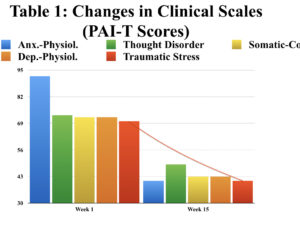
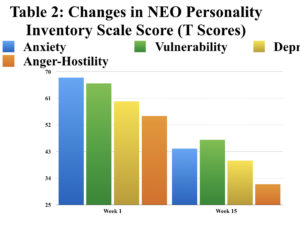
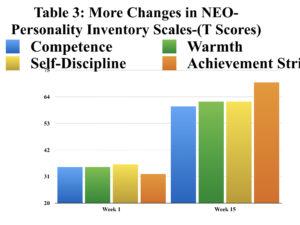
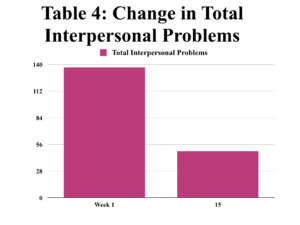
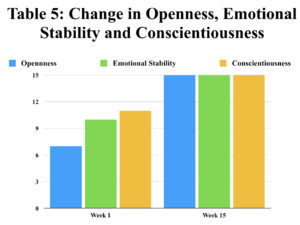
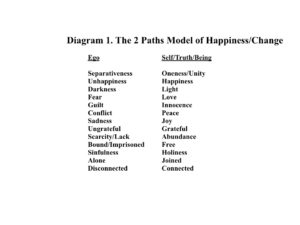
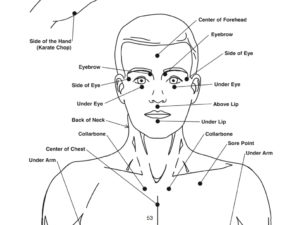



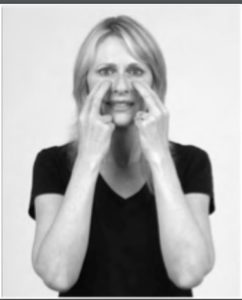
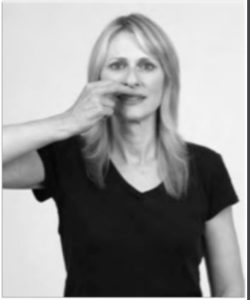



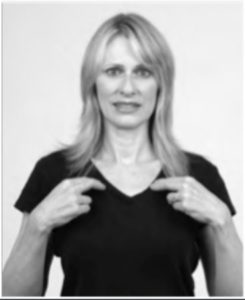





I love this approach, and have gained much of benefit both for myself and others from “The Forgiveness Solution”.
* Thank you David. Forgiveness is such an important issue for almost everyone; i.e. forgiving oneself and forgiving others. This requires letting go of grievances and judgments, shifting perceptions, choosing peace over conflict and love over fear. The Forgiveness Solution book as you know has about 50 exercises to help readers do that.
Bravo! The multi-intervention, mind-body approach is obviously a more thoughtful and thorough solution on the human psyche than traditional therapies. Thank you for this powerful tool/map to help others plot the course of some of the most common, yet debilitating, conditions for therapy clients.
Jeannette, I call my approach ICBEST which stands for an “Integrative, Cognitive, Behavioral, Energy, Spiritual Therapy” approach and includes multiple interventions within a mind-body-energy-spirit framework. It is truly a powerful tool/map based on an underlying meta-model described in my chapters “Integrative Forgiveness Therapy” and “Integrative Psychotherapy” (see references). Thank you for your positive feedback.
Thank you so much for sharing this. I use a lot of EFT in my work as a hypnotherapist and I love the techniques you outlined. I will be buying the book and using it with clients as well.
Rose, thank you for your thoughtful comments. The PPPT (Positive Pressure Point Technique) I developed and described in the article is a kind of “kissing cousin” to EFT (Emotional Freedom Techniques) first developed by Gary Craig. It is easy to combine hypnotherapy with EFT or PPPT which I do myself. I am delighted to hear you will be buying the Forgiveness Solution book. I trust you will find it helpful as forgiveness and energy healing are so important in facilitating healing and change.
Beautiful study. It really demonstrates the miraculous outcomes that are typical when integrating energy psychology and spirituality into one’s work. Thank you for sharing this. The world needs to see and understand just how powerful these modalities are so the traditional paradigm can shift.
Alyson. I am very pleased to hear you found this a beautiful study.
It is true that integrating energy psychology and spirituality into one’s work can bring about amazing outcomes. I teach clients early on the phrase “I am entitled to miracles” and encourage a miracle mindset as part of the healing process. As you say spiritual and energy therapy are powerful modalities that can be integrated with more traditional cognitive, behavioral and relationship approaches. I appreciate your comments.
I love the sequencing and will use this approach with my clients. While I have been using trauma release methods from Healing Touch and Energy Psychology and prefer the hold and breath approach, I find that the sequencing you are suggesting is adding yet another aspect that a client can incorporate easily in their daily routines. Thank you so much
Ines. You are welcome. Yes “hold and breathe” is an excellent complement to the “tapping technique” and for some clients even more powerful. It is also a kind of short mindfulness or meditation technique as well. I am delighted that you noticed the sequencing I used as each step builds on the other. In the article I describe 5 of the 8 steps in the complete PPPT (Positive Pressure Point Techniques) approach. (The other 3 are in my book the Forgiveness Solution) The sequencing also uses aspects of the LOA (Law of Attraction) as well and is designed to re-empower clients.
Many of our issues as humans have a deep spiritual component. Will I love myself and others? Or will I hang on to hatred, revenge, unforgiveness, retribution?
Techniques like the Forgiveness Solution are powerful.
The more we can see how our thoughts impact our life and health, the more it empowers us–as individuals and helping professionals–to make our contributions to a community of health with the goal of making the world of human interactions a better place.
Cheri, you are correct, of course, that many of our issues have a deep spiritual component. Loving oneself and others requires self and other forgiveness and lots of self-compassion and compassion for others. Personal and spiritual growth requires a shift in perception, perspective, focus and behavior with love, forgiveness and gratitude as central components. “Love flourishes where there is gratitude and forgiveness”
Thank you for your comments. It is much appreciated.
Thsnks for this interesting and clear article. As a practitioner of energy psychology for over 20 years, I well know just how amazingly effective it can be!
Karen, you were, like me, then, an early adopter of energy psychology and probably integrated it into your overall therapy approach. Yes it can be amazingly effective in most cases as it facilitates healing at different levels (energetic and somatic) than the cognitive and behavioral approaches do alone. Combining them with relationship approaches makes them even more effective. By relationship I mean the relationship with the therapist and the relationship with significant others. However, even these can be considered as energetic exchanges.
Very good and informative article. I like that graphs and quantitative data are provided..
I was trained and did research in cognitive therapy in its infancy in 1974 with Beck and Seligman at University of Pennsylvania. Provided cognitive therapy for 23 years..
Fortunately, I was then trained in energy psychology in 1997. As a past researcher, I can tell you that cognitive therapy is slower and not as comprehensive in client’s improvement.
Energy Psychology is not accepted enough because the methods are so different than established methods.The early research was done poorly and was rightfully criticized. However, there is a tremendous amount of research confirming the efficacy of energy psychology. Read the reference done by Feinstein or go to
https://cdn.ymaws.com/www.energypsych.org/resource/resmgr/research/EP_Studies_with_Abstracts_Ch.pdf
https://cdn.ymaws.com/www.energypsych.org/resource/resmgr/research/EP_Studies_with_Abstracts_Ch.pdf
References are worth reading
Robert your therapy path is fairly similar to mine. I came to Philadelphia on a NIMH postdoc fellowship in 1968 (a few years ago:) to study (with Arnold Lazarus, Ph.D and Joe Wolpe, M.D.) behavior therapy, cognitive behavior therapy and multi-modal therapy. I also, being in Philadelphia, had access to Beck and Seligman’s cognitive work and the well-known family therapists Ivan Boszormenyi-Nagy, M.D., James Framo, Ph.D., Gerad Zuk, Ph.D and of course Sal Minuchin, M.D. and Jay Haley. I learned energy psychology from Fred Gallo, Ph.D in 1996. Previously I had become involved in yoga and meditation and A Course in Miracles (which focuses on forgiveness) in 1977 both of which were spiritual paths as well. I combined all this into the ICBEST approach (Integrative, Cognitive, Behavioral, Energy and Spiritual Therapy). Still I use the EP approaches a lot and the references you give are excellent ones. The graphs and quantitative data are essential to the work I do tracking change over time. (As they say “ a picture is worth a thousand words”) Thanks for your comments. Much appreciated.
THE ARTICLE BY DR. FRIEDMAN WAS PRESENTED IN A COMPREHENSIVE MANNER AND IT APPEARS TO UTILIZE MANY EVIDENCE BASED PSYCHOLOGICAL PRINCIPLES AND METHODS. I BELIEVE THAT IT WILL MAKE A CON- TRIBUTION TO THE FIELD OF PSYCHOLOGY.
Ron, thanks for your generous and positive comments. I certainly attempt to be comprehensive in my work and articles and certainly to use a variety of evidence based methods. I call my approach a Practice Based Evidence Approach (PBEA). The forgiveness, spiritual and energy healing methods and processes in addition to the cognitive, behavioral and relationship ones are certainly designed to make a contribution to the field of psychology.
I am very happy to see your use of tapping and other energy therapy techniques. I also have found them to be of major benefit for clients with regard to releasing negative energy. Bravo. I look forward to the day when all psychologists will learn these techniques as part of their basic psychotherapy training.
Susan, thank you so much for emphasizing the use of the energy therapy and tapping techniques in your practice and reinforcing that they can greatly reduce negative energy quickly. I believe that an increasing number of psychologists and therapists in general will be learning these energy therapy techniques as well as forgiveness and spiritual techniques such as mindfulness and meditation.
* In addition to my earlier scales (Friedman Well-Being and Friedman Positive and Negative Affect Scales) that measure and track change over time I developed 2 new scales to measure changes in psychotherapy and spirituality recently: the Friedman Life Balance Scale and the Friedman Spiritual Awakening Scale. These 2 scales measure and track change facilitated by the energy therapy and other techniques used in psychotherapy or can be used to measure changes in the general population.
Thank you again.
“More Miracles Occur from Forgiveness and Gratitude than Anything Else”
Forgiveness is a hard concept to get many clients/patients to consider. This article puts a powerful empirical emphasis on it to support the clinical perspective. Dr. Friedman has done a masterful job integrating the the two ends of this very important topic.
Thanks Michael for your thoughtful comment. Yes forgiveness is a challenging concept to consider for clients/patients. Of course it is a little bit easier since I review with them how they did on a number of forgiveness scales that measure how forgiving they are toward themselves, others and circumstances; and I give them a copy of my book the Forgiveness Solution usually around the 3rd therapy session. I focus on helping them initially see how forgiveness helps them release the hurt, disappointment, anger, bitterness, resentment, grievances, guilt and attack thoughts that increases their emotional distress and decreases their well-being. The energy healing techniques (PPPT or Positive Pressure Point Techniques) are a big help here as well. Eventually for many clients it will also help them heal their relationships with partners/spouses, ex-spouses, parents, children, in-laws, siblings, bosses, colleagues etc.. Recently a client reconnected after 15 years with his mother after no communication or contact for all that time because he finally forgave her (after forgiving himself and his wife first). Then his wife and kids were able to meet her for the first time. Thanks again for your comment. Much appreciated.